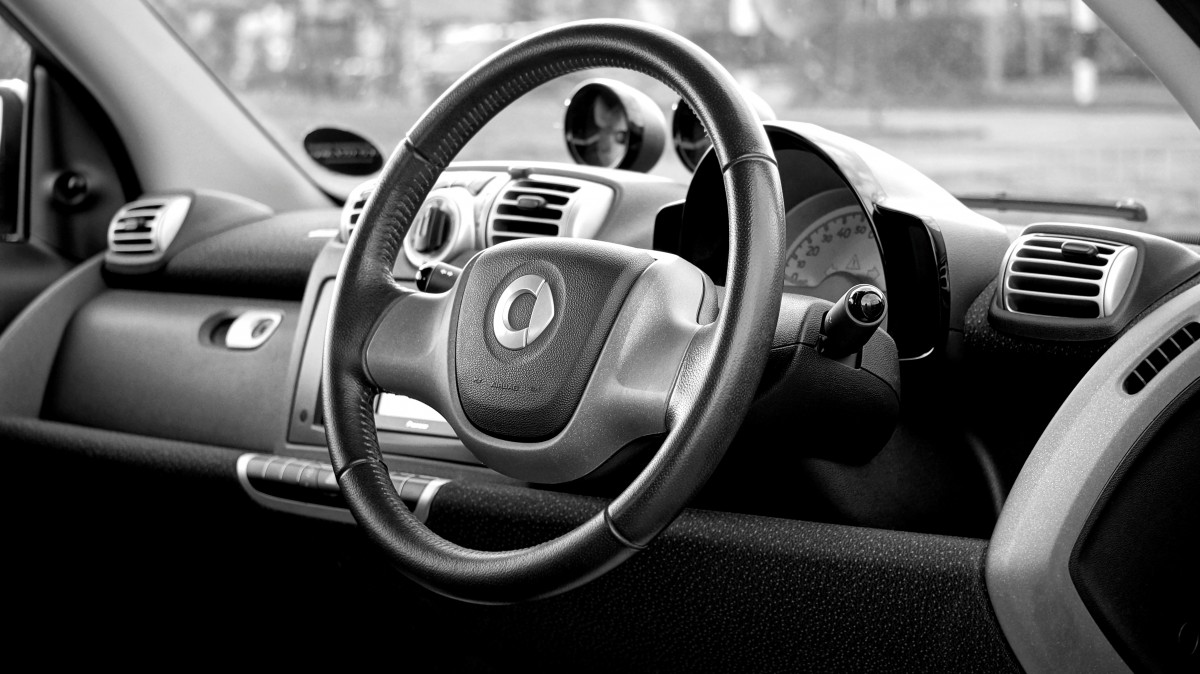Introduction: Mastering the Art of the Used Car Purchase
The process of acquiring a used vehicle often feels like navigating a financial minefield, fraught with the potential for costly mechanical surprises, hidden liabilities, and aggressive sales tactics. While the allure of a lower price point makes the used car market highly attractive to budget-conscious consumers, the inherent risks—such as undisclosed accident history, deferred maintenance, or outright odometer fraud—demand a meticulous, systematic, and entirely unemotional approach to evaluation.
Relying solely on the seller’s assurances or a vehicle’s superficial appearance is the single greatest mistake a buyer can make. Successfully purchasing a reliable pre-owned car requires transforming from a hopeful shopper into a forensic investigator, armed with a comprehensive checklist and a commitment to independent verification.
This journey is not just about finding a car that looks good; it is about mitigating the thousands of dollars in potential post-purchase expenses that an unforeseen engine failure or transmission replacement could incur. A disciplined buyer must scrutinize the vehicle’s history, rigorously inspect its mechanical components, and, crucially, secure an independent professional assessment before any money changes hands.
Skipping any step in this verification process amounts to gambling with a significant portion of one’s savings. The complexity of modern automotive engineering means that even minor issues can quickly escalate into major financial burdens, underscoring the necessity of a systematic checklist approach.
This comprehensive guide is designed to serve as your definitive, step-by-step checklist for safely purchasing a used car. We will dissect the process into three critical phases: Pre-Inspection Research, The Physical and Test Drive Evaluation, and The Final Negotiation and Documentation. By following these preparations diligently, you empower yourself to identify red flags, establish the vehicle’s true value, and secure a reliable asset at a fair price, ensuring your investment in transportation is sound and stress-free.
Phase I: Pre-Inspection Research and Verification
Before you physically inspect any vehicle, you must conduct thorough digital and documentary research to eliminate cars with major, irreparable red flags.
A. Define Your Budget and Needs
Entering the market without clear financial and logistical parameters invites overspending and distraction.
- Establish Maximum Price: Determine the absolute maximum amount you can spend, including the purchase price, taxes, registration fees, and a budget buffer for immediate repairs (at least $1,000).
- Financing Pre-Approval: Secure pre-approval for an auto loan from your bank or credit union before talking to the seller. This sets your maximum interest rate and maximum loan amount, giving you powerful negotiating leverage.
- Identify Essential Features: Determine the specific make, model, and year range that meets your needs (e.g., fuel efficiency, cargo space, safety rating). Stick to these parameters to avoid impulse purchases.
B. Requesting and Reviewing Documentation
Never trust a seller who is unwilling or unable to provide full, verifiable documentation.
- Clean Title Verification: Confirm the seller possesses the clean title (certificate of ownership). Avoid vehicles with salvage, rebuilt, or flood titles, as these are virtually impossible to insure and carry immense mechanical risk.
- VIN Verification: Obtain the Vehicle Identification Number (VIN) immediately. The VIN is required for the history report and should be checked against the vehicle’s dashboard tag and driver’s side doorjamb sticker.
- Maintenance Records: Request and scrutinize all maintenance records and repair receipts. A history of consistent oil changes and scheduled maintenance is a strong indicator of responsible ownership. A gap in maintenance is a major red flag.
C. Running a Comprehensive Vehicle History Report
A vehicle history report is a non-negotiable step that provides an objective record of the car’s past.
- Obtain the Report: Purchase a comprehensive report from reputable services like CarFax or AutoCheck using the VIN. Never rely on an unverified report provided by the seller.
- Check for Accidents: Verify that the report shows no records of serious accidents, frame damage, or airbag deployment. Accidents reduce the vehicle’s structural integrity and resale value.
- Odometer Check: Ensure the odometer reading on the dashboard is consistent with the mileage reported on the history report and past service records. Discrepancies may signal odometer tampering (fraud).
- Title Issues: Confirm the report shows no title issues such as flood damage, salvage status, or lemon law buybacks.
Phase II: The Physical and Test Drive Evaluation

Once the paperwork checks out, the car must pass rigorous mechanical and structural scrutiny by both you and a professional.
A. The Detailed Exterior and Interior Inspection
Before starting the engine, look for signs of rust, damage, or wear that indicate poor maintenance or accident concealment.
- Body Panel Alignment: Check all body panels (doors, hood, trunk) to ensure they align perfectly and have consistent gaps between them. Uneven gaps or mismatched paint colors are signs of poor-quality body repair following an accident.
- Tire Condition: Check the tire tread depth for even wear. Uneven wear patterns (more wear on one side) can indicate serious alignment or suspension issues. Ask the age of the tires.
- Fluid Leaks: Look under the car for recent fluid leaks (dark oil, red transmission fluid, green coolant). Check under the hood for clean, new fluid containers, which may signal a seller trying to hide a leak.
- Interior Wear: Inspect the driver’s seat, steering wheel, and pedals. Excessive wear that is inconsistent with the odometer reading (e.g., heavy pedal wear on a low-mileage car) may signal fraud.
B. The Crucial Test Drive
The test drive should be a planned, focused exercise designed to push the car’s major systems.
- Engine and Transmission: Listen for excessive engine noise, knocking, or high-pitched squeals. Test the transmission by accelerating and decelerating, ensuring smooth, immediate shifting without lag, clunks, or hesitation.
- Brakes and Steering: Drive the car in an empty lot and brake firmly. The car should stop straight, without pulling to one side. Test the steering at low and high speeds for excessive looseness or grinding noises.
- Electronics and HVAC: Test every single electrical component: windows, locks, radio, air conditioning (both hot and cold), and the dashboard display. A faulty electronic system is often expensive to diagnose and repair.
C. The Pre-Purchase Inspection (PPI)
This step is non-negotiable for any used car purchase.
- Independent Mechanic: Arrange for a comprehensive Pre-Purchase Inspection (PPI) by an independent, certified mechanic of your choosing, not the seller’s. The mechanic should specialize in the car’s make, if possible.
- Diagnostic Scan: The mechanic should perform a diagnostic scan of the onboard computer (OBD-II) for active or pending fault codes, which can reveal hidden engine or transmission problems.
- Structural Integrity: The PPI confirms the vehicle’s structural integrity, checks for frame damage, and provides a professional opinion on the expected life of major components (e.g., brakes, battery, suspension). Be prepared to pay $100 to $200 for this service—it is the best insurance you can buy.
Phase III: Final Negotiation, Documentation, and Closing

Once the car passes the PPI, you move to the negotiation and finalize the critical paperwork.
A. Strategic Negotiation Based on Data
Use the data gathered during the inspection and PPI to negotiate the selling price.
- Cost Justification: Use the PPI report to justify a lower price. If the mechanic identifies $500 worth of necessary brake work, deduct that amount from your offer.
- Know the Market Value: Use the verified market value (e.g., KBB Private Party Value) as your starting point. Do not start your negotiation based on the seller’s initial asking price.
- Separate the Trade-In: If you have a trade-in vehicle, negotiate the purchase price of the used car first and settle it. Only then should you introduce the trade-in to avoid confusion and shell games.
B. Finalizing the Sale Documentation
Ensure all legal and financial paperwork is handled correctly to transfer liability and ownership.
- Bill of Sale: Complete a detailed Bill of Sale that includes the final purchase price, the date, the seller’s name and address, and the vehicle’s VIN and odometer reading. Both parties must sign it.
- Title Transfer: Ensure the seller signs the vehicle title over to you. In some states, this must be notarized. Promptly take the title and Bill of Sale to your local Department of Motor Vehicles (DMV) to register the car in your name and pay the necessary sales tax and registration fees.
- Proof of Insurance: Before driving the car away, you must have the required auto insurance policy activated for that specific vehicle. Do not drive an uninsured vehicle.
C. Considering a Warranty
For higher-priced used vehicles, a warranty may be a worthwhile investment.
- Dealer vs. Third-Party: Compare warranties offered by the dealer against reputable third-party warranty providers. Third-party providers often offer better coverage for a lower price.
- Coverage Details: Scrutinize the warranty details: note the deductible amount, the specific covered components, and whether the warranty is exclusionary (listing only what is not covered) or inclusionary (listing only what is covered).
Conclusion: A Discipline-Driven Purchase
Safely buying a used car is a methodical, discipline-driven process where financial security is prioritized over haste or emotion. The successful buyer begins by diligently conducting pre-inspection research, meticulously verifying the Vehicle Identification Number against accident and title history reports to eliminate major risks immediately.
The subsequent physical evaluation is then rigorously confirmed by securing a mandatory Pre-Purchase Inspection (PPI) from an independent mechanic, which serves as the indispensable final shield against unforeseen mechanical failures. This professional assessment provides the objective data necessary to inform a strategic negotiation, allowing the buyer to confidently justify deductions for necessary repairs against the true market value.
By committing to this comprehensive, three-phase checklist, the consumer minimizes financial risk, avoids common fraud pitfalls, and ensures their investment in a pre-owned vehicle is reliable, secure, and cost-effective.













